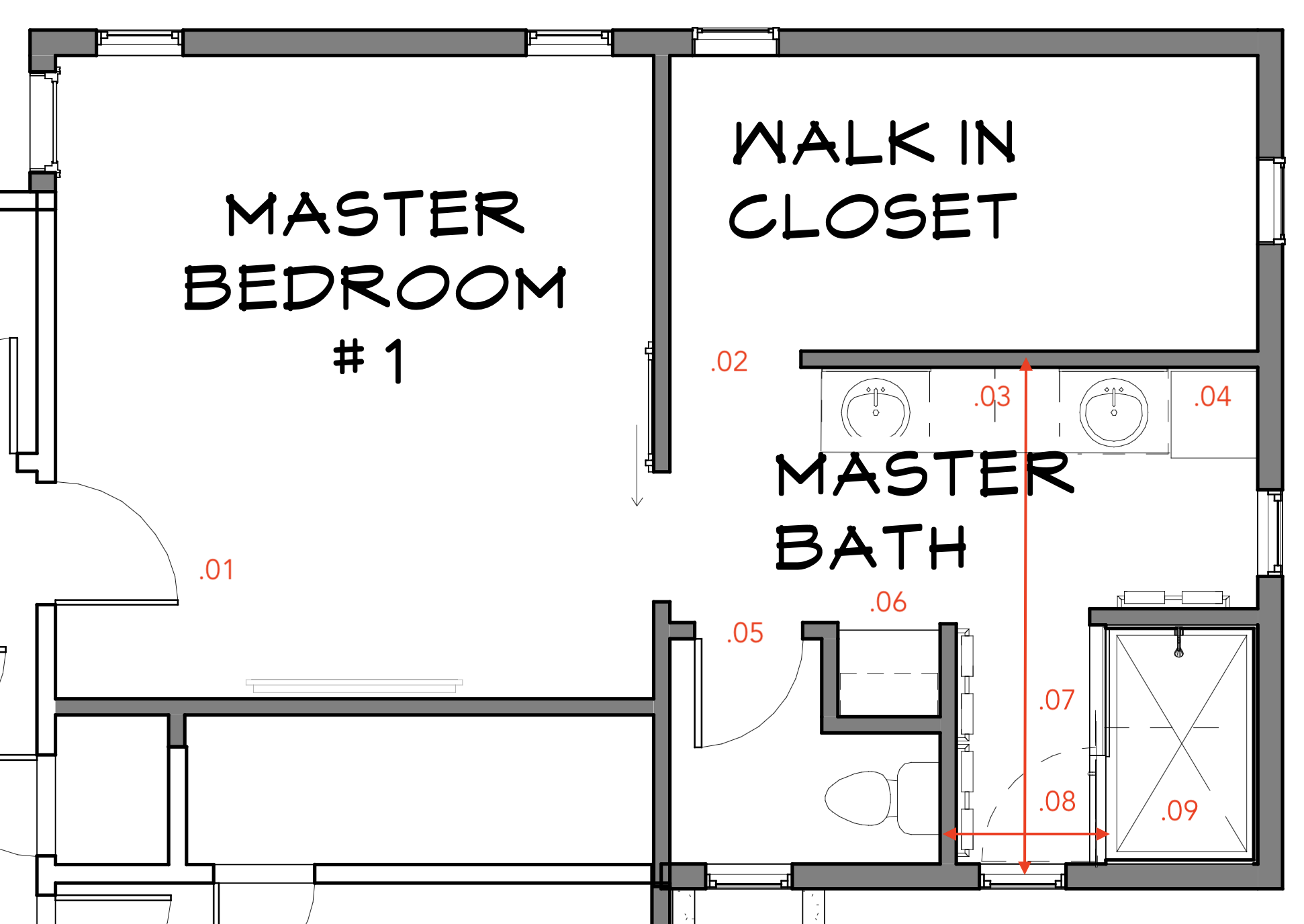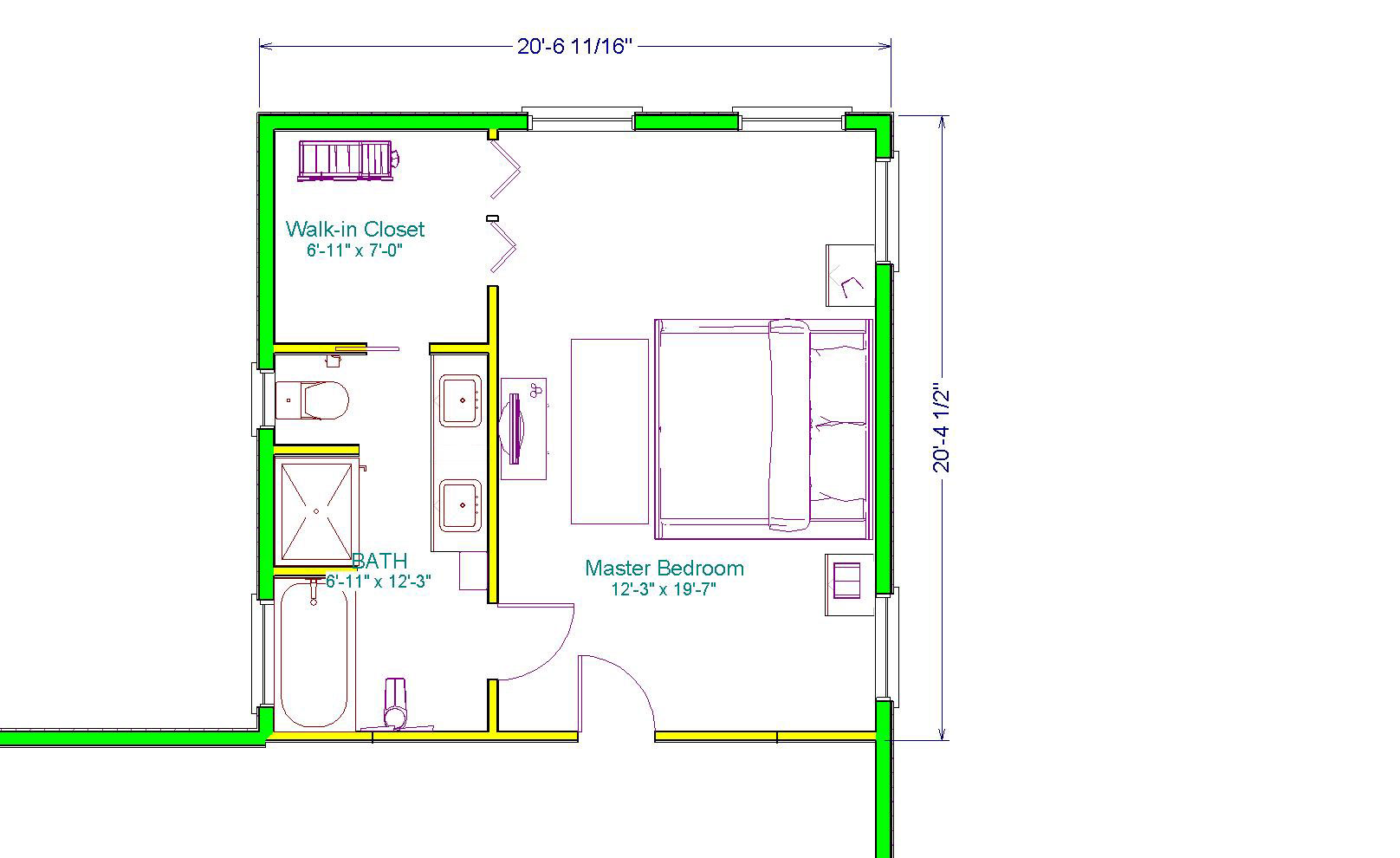Planning Your Master Bedroom Addition: Master Bedroom Addition Floor Plans

Adding a master bedroom to your home can significantly enhance your living experience, providing increased space, privacy, and potential for a higher resale value. However, careful planning is crucial to ensure a successful project that meets your needs and budget.
Budgeting for Your Master Bedroom Addition
Before embarking on a master bedroom addition, it’s essential to establish a realistic budget. This involves considering the cost of materials, labor, permits, and any unforeseen expenses. A well-defined budget will guide your decisions and prevent costly surprises.
Understanding Building Codes and Site Constraints
Master bedroom additions must comply with local building codes and zoning regulations. These codes dictate factors like minimum room sizes, window requirements, and fire safety standards. Furthermore, site constraints such as property lines, easements, and existing utilities must be considered to ensure a feasible and safe addition.
Step-by-Step Planning Process
- Consult with an Architect: An architect can create a detailed plan for your master bedroom addition, incorporating your design preferences and ensuring compliance with building codes. They will also assist in determining the feasibility of your project and provide valuable insights into construction techniques.
- Obtain Necessary Permits: Contact your local building department to apply for the required permits. This typically involves submitting plans, specifications, and potentially paying fees. Permits ensure that your addition meets safety standards and complies with zoning regulations.
- Select a Contractor: Choose a reputable and experienced contractor who specializes in residential additions. Request bids from multiple contractors and compare their qualifications, experience, and pricing. A thorough review of references and online reviews can help you make an informed decision.
- Develop a Detailed Construction Schedule: Collaborate with your contractor to create a detailed construction schedule that Artikels timelines, milestones, and potential challenges. This schedule will help you stay organized and manage expectations throughout the project.
- Finalize Materials and Finishes: Select materials and finishes for your master bedroom addition, considering factors like durability, aesthetics, and budget. Consult with your architect and contractor to ensure compatibility and feasibility.
- Regularly Monitor Progress and Address Issues: Maintain open communication with your contractor and regularly inspect the construction site. Address any concerns or issues promptly to avoid delays and ensure the project stays on track.
Exploring Master Bedroom Addition Floor Plans

Creating a floor plan for your master bedroom addition is crucial for maximizing space, functionality, and aesthetic appeal. It allows you to visualize the layout, ensure efficient use of square footage, and incorporate desired features. This section explores various master bedroom addition floor plan layouts, highlighting their advantages and disadvantages, and providing tips for customization.
Floor Plan Layouts and Their Features
Different master bedroom addition floor plans offer unique configurations and features to suit diverse preferences and needs. The choice depends on factors such as available space, desired functionality, and budget.
- L-Shaped Layout: This layout creates a spacious and inviting master bedroom with a distinct separation between the sleeping area and other zones like a sitting area or walk-in closet. This layout offers flexibility in furniture arrangement and allows for natural light to flow through multiple windows.
- Rectangular Layout: A simple and efficient layout, the rectangular master bedroom provides a straightforward and practical approach. This layout maximizes floor space, allowing for a large bed, ample storage, and a comfortable seating area.
- Split-Level Layout: This layout features a raised platform for the sleeping area, creating a sense of separation and privacy. The split-level design allows for a unique and visually appealing bedroom with a distinct sleeping area, potentially a bathroom, and a walk-in closet.
Considerations for Choosing a Floor Plan
When selecting a master bedroom addition floor plan, several factors influence the decision-making process.
- Square Footage: The available square footage dictates the layout’s feasibility and the extent of features that can be incorporated. Larger spaces offer greater flexibility in furniture arrangement and the inclusion of amenities like walk-in closets and en-suite bathrooms.
- Natural Light: Maximizing natural light is crucial for creating a bright and welcoming atmosphere. Floor plans that strategically position windows to maximize natural light throughout the day are highly desirable.
- Functionality: Consider the intended use of the master bedroom addition. A bedroom solely for sleeping requires a different layout than one intended for relaxation, reading, or working from home.
Customizing Master Bedroom Addition Floor Plans
Tailoring a master bedroom addition floor plan to individual needs and preferences is essential.
- Walk-in Closets: Incorporating a spacious walk-in closet provides ample storage space for clothing, shoes, and accessories. Consider the layout and size of the closet to ensure efficient organization and easy access to belongings.
- En-suite Bathrooms: An en-suite bathroom adds a luxurious touch and provides privacy and convenience. The layout should prioritize functionality, including a shower, bathtub, toilet, and vanity with ample counter space.
- Private Balconies: A private balcony extends the living space and offers a tranquil outdoor retreat. The size and layout of the balcony should complement the overall design of the master bedroom addition.
Design Inspiration and Features

Transforming your master bedroom into a haven of comfort and style is a rewarding endeavor. A master bedroom addition presents an exceptional opportunity to create a truly personalized sanctuary, reflecting your unique tastes and aspirations. To inspire your vision, let’s explore captivating examples of master bedroom additions, delve into key design considerations, and guide you through the selection of furnishings and finishes that harmonize seamlessly with your chosen aesthetic.
Inspiring Examples of Master Bedroom Addition Designs
Master bedroom additions can showcase an array of architectural styles and design elements, each with its own captivating appeal. Let’s explore a few examples that illustrate the possibilities:
- A modern master bedroom addition with clean lines and expansive windows could feature a minimalist interior design scheme, incorporating a neutral color palette, sleek furniture, and natural materials such as wood and stone. This approach creates a sense of tranquility and spaciousness.
- A traditional master bedroom addition might embrace ornate moldings, vaulted ceilings, and a fireplace, adding a touch of elegance and grandeur. A rich color palette, plush fabrics, and antique furniture can enhance this style.
- A contemporary master bedroom addition could showcase bold geometric patterns, vibrant colors, and statement lighting fixtures. This design approach exudes a sense of energy and individuality.
Key Design Considerations for a Master Bedroom Addition
To maximize the potential of your master bedroom addition, consider these key design elements:
- Maximizing natural light: Strategic window placement can flood the space with natural light, creating a brighter and more inviting atmosphere. Consider using large windows, skylights, or French doors to achieve this effect.
- Creating a sense of spaciousness: Clever use of space and light can make a smaller bedroom feel larger. This might involve incorporating built-in storage solutions, minimizing clutter, and selecting furniture with clean lines.
- Incorporating personalized touches: Add your unique personality to the design by incorporating elements that reflect your interests, hobbies, or favorite colors. This could include artwork, decorative accents, or even a custom-designed headboard.
Selecting Furniture, Fixtures, and Finishes, Master bedroom addition floor plans
The furniture, fixtures, and finishes you choose will play a crucial role in shaping the overall aesthetic of your master bedroom addition. Consider these factors:
- Furniture: Select furniture that is both functional and aesthetically pleasing. Think about the purpose of each piece and how it will be used. For example, a comfortable seating area could be a welcome addition for reading or relaxation.
- Fixtures: Fixtures such as light fixtures, door hardware, and plumbing fixtures should complement the overall design style. For a modern aesthetic, sleek and minimalist fixtures are a good choice. For a traditional look, consider ornate or antique-inspired fixtures.
- Finishes: Finishes such as flooring, paint, and countertops should be chosen to create a cohesive and inviting space. Consider the overall color scheme, texture, and durability of each finish.
